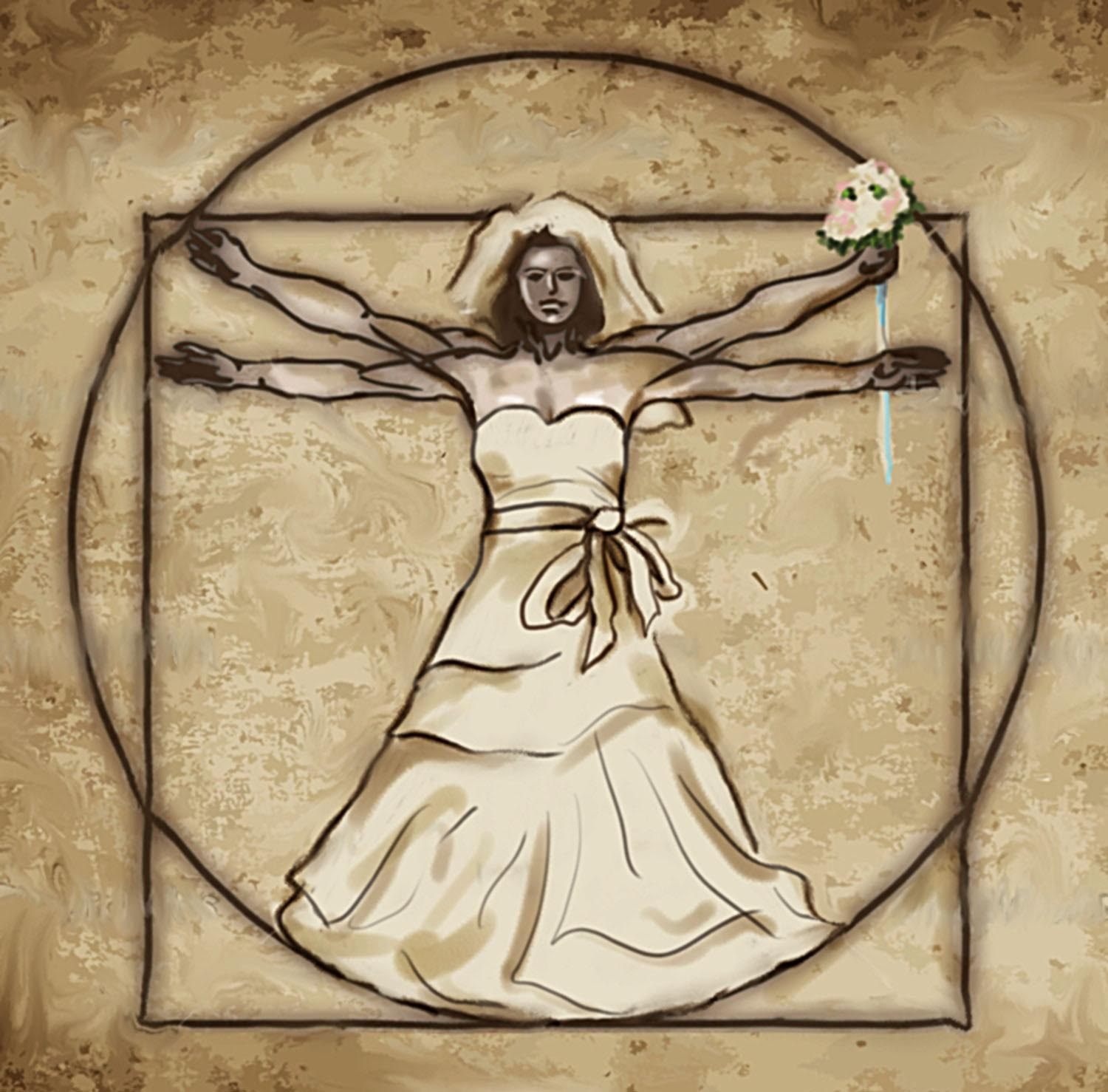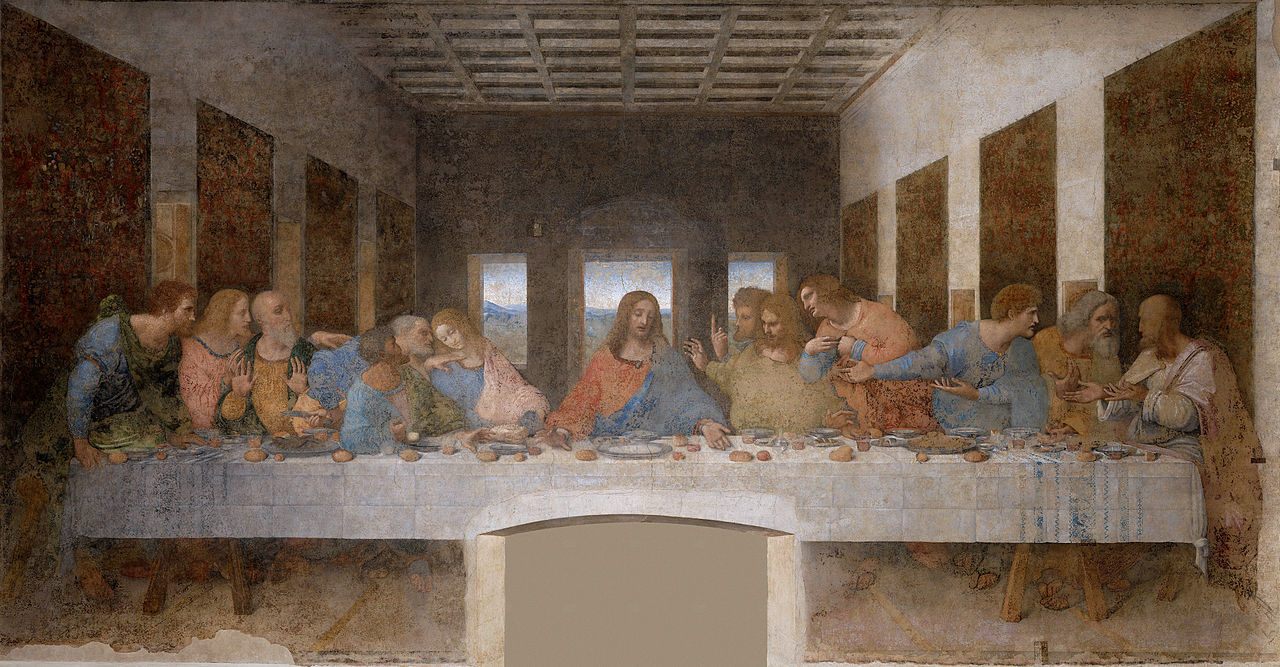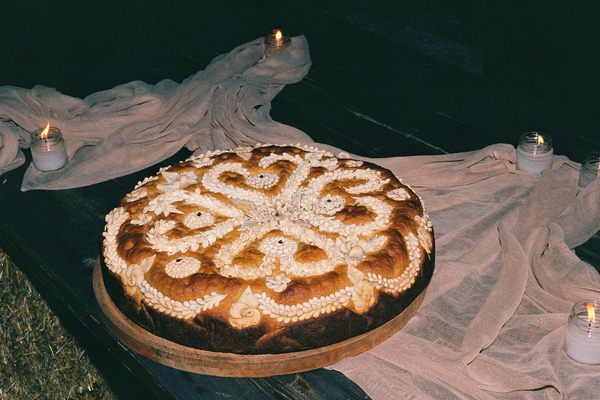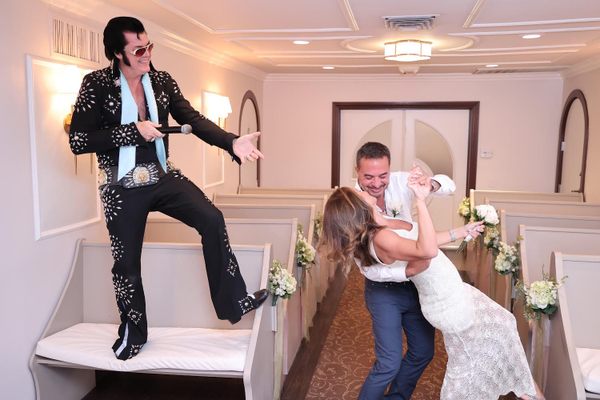Leonardo Da Vinci Was a Wedding Planner
He really was a Renaissance man.

(Illustration: Bob Eckstein)
It is Las Vegas, of all places, which shines a light on one of history’s greatest genius’ lesser known talents. At an elaborate exhibition at the Venetian (Las Vegas, that is) the show announces, “Leonardo was a well-rounded Renaissance man with interests and hobbies that spanned beyond the scope of his inventions and life’s work as a painter, a scientist, engineer, mathematician and wedding planner.”
Wedding planner?
Born Lionardo di ser Piero da Vinci in the hill town of Vinci in 1452, he shortened his name to the easier-to-remember Leonardo da Vinci, meaning Leonardo from Vinci. While others spent their time at that point in history pillaging or merrymaking, da Vinci was envisioning the future and designing machines that would change the world centuries ahead of their time reaching such creative heights like inventing the first submarine and the first water skis.
Understandably his sexier accomplishments, like painting the Mona Lisa and inventing the deep-sea diving suit, overshadowed his time as a wedding planner. But wedding plan he did—from approximately between 1489 to 1493—and like everything else da Vinci put his mind to, it was with gusto and moxie. Being a wedding planner is not a total surprise considering Leonardo’s background in the food industry. His step-father, a pastry chef, got him hooked on sugar, introducing him to marzipan. His nickname at age 17 was, “Fat Boy.”

Da Vinci’s design for walking on water. (Photo: Public Domain)
At age 20, he was an apprentice in a restaurant called Le Tre Lumache (The Three Snails) where he gained a great deal of knowledge about snails, which were served everyday with butter and parsley. A year later, in the spring of 1473, a poisoning sickened and killed the majority of the cooking staff of the tavern and da Vinci was put in charge of the kitchen. He changed the menu completely. Always progressive, da Vinci tried to introduce a more sensible, lighter fare. Examples were delicate portions of carved polenta arranged beautifully on the plate. The only problem with all of this was no one cared what was served– most tavern clientele, the patrons preferred their meals in huge messy portions, tasteless hash of meats and corn porridge was slopped in front of them. His new creation was a real turkey and, consequently, The Three Snails, went under.
But his notebooks included innovations for the kitchen including giant whisk the size of a giraffe and a nut-cracker that was powered by three horses. Da Vinci was inventing kitchen appliances (one was to be powered by bees). During this time, da Vinci developed a strong interest for dining etiquette and some historians credit him for inventing the napkin. Obviously, da Vinci was primed for bigger and more important things–wedding planning. Ignoring his unique skills in science, mathematics and human anatomy, not to mention his gifts in painting and sculpture, he took a position as “Master of Feasts & Banquets,” a fancy way of saying, wedding planner.
When da Vinci coordinated the wedding of Duke Giovanni Galeazzo with Isabella of Arragon in 1489 his production for the ceremony included a representation of heaven and the revolving planets. As the couple walked through the display, each planet opened revealing a person dressed as the deity of each. Each person recited a Bellincioni poem for the newlyweds.

Da Vinci’s The Last Supper. At one of the weddings he planned, he also had diners seated along one side of a long table. (Photo: Public Domain)
The Duke of Milan Leonardo wedding of 1491 would turn out to be his biggest gig. Not only did he create the menu, entertainment and decoration but he even designed what guests would wear, including their hats. His ingenious dining room layout, which was one long table with diners all sat on the same side, would be an idea he revisited later when he painted The Last Supper.
Other gigs were not so seamless. Ludovico Sforza wanted to do something out of the ordinary for his wedding to the princess Beatrice d’Este so he had da Vinci create an edible 200-foot-long altar, complete with chairs made of cake and polenta. With everything in place the eve of the wedding, droves of astonished rats feasted on the wedding site, the one thing da Vinci did not account for in his calculations. The wedding was postponed until da Vinci had time to bake a new altar.
Over time, the wedding planning business took its toll on da Vinci and the quiet genius shifted his focus on a more unvarying, relaxing line of work–designing military weapons and devising war strategy for Italian tyrants. He would go on to invent machines like the giant crossbow and the armored vehicle, what we now refer to as the tank. Inventions from his wedding planning days had little application in this new arena although many questions remain regarding his years as a wedding planner and if they inspired his later inventions; Was his camera obscura in his Codex Atlanticus, a primitive form of the disposable camera to be left on each wedding table for guests to capture their favorite moments? Were drawings of a flying machine he called the Aerial Screw, an early cousin of today’s helicopter, meant as a possible grand entrance for the bride and groom?
One drawing from his early books of writings, shows a motorized cart with something tied to the back to catch the air to brake to act as brakes. Or was that just the wedding tradition of tin cans tied to the back? It was probably even Leonardo da Vinci’s idea to throw rice at the bride and groom.








Follow us on Twitter to get the latest on the world's hidden wonders.
Like us on Facebook to get the latest on the world's hidden wonders.
Follow us on Twitter Like us on Facebook